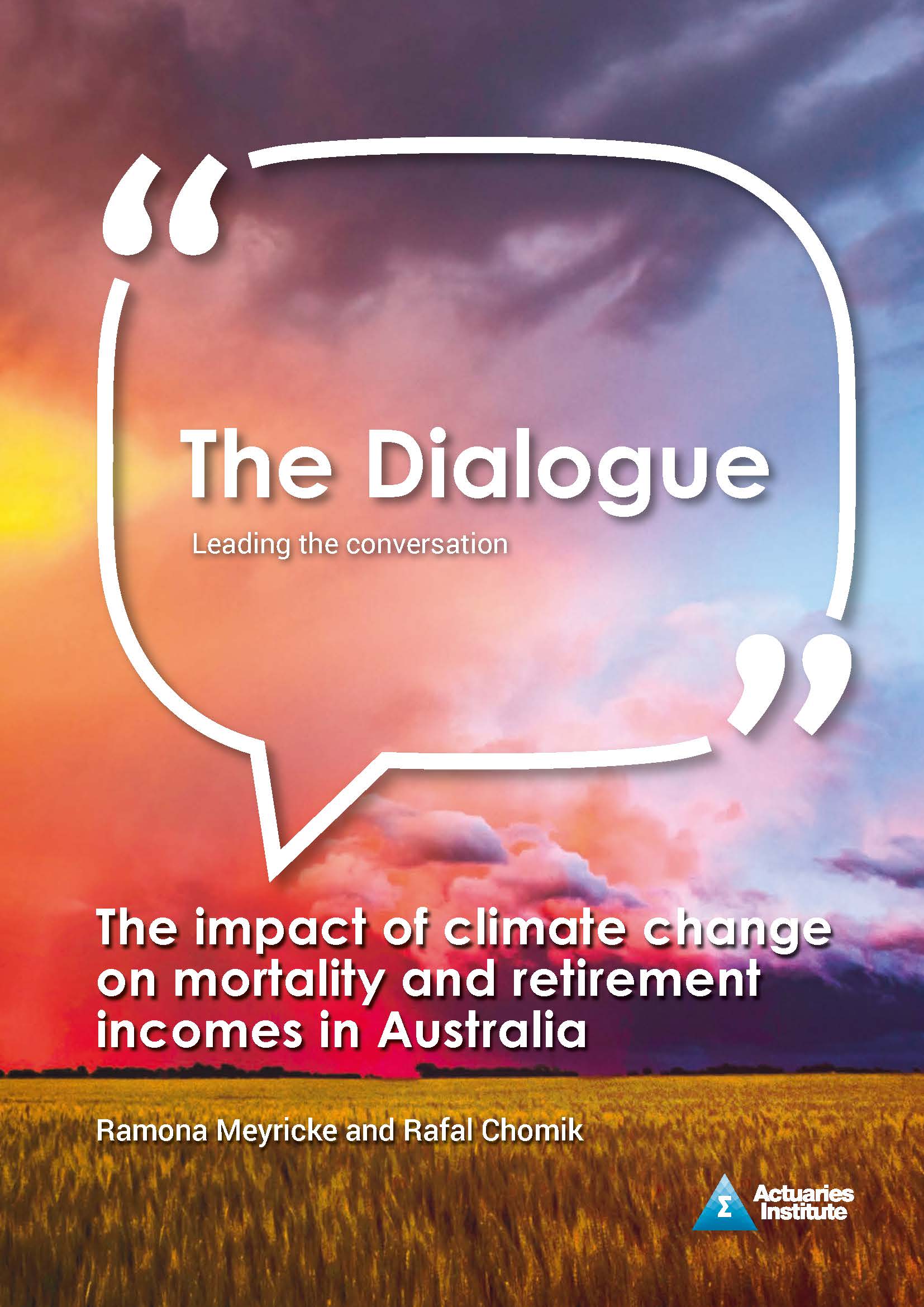
Image: Landscape in red light
Actuaries Institute Media Release
-
Heatwaves, which have killed more Australians than any other natural disaster, are expected to become more frequent and last longer.
-
Deaths from heatwaves could rise by 12% among over 65-year-olds by 2060-2080 in some regions.
-
Climate change may have negative long-term return implications for investors.
-
For individuals, it may mean lower super balances; illustrative modelling suggests reductions of 11-18% for the median earner.
Within the lifetime of Australia’s millennials, the frequency and duration of heatwaves will increase, leading to increased deaths among the nation’s elderly, according to an Actuaries Institute Dialogue paper on the widespread impacts of climate change, co-authored by CEPAR researchers Rafal Chomik and Dr Ramona Meyricke.
The paper states that heatwaves, which have killed more Australians than any other natural hazard, will at least triple by 2060-2080. More frequent, longer and hotter days will drive a significant increase in mortality, with Australia’s ageing population amplifying the number of people who will die as a result of climate change.
*The Dialogue paper, The Impact of Climate Change on Mortality and Retirement Incomes in Australia, has been written by Ramona Meyricke and Rafal Chomik. Dr Meyricke is a Senior Actuary and Associate Investigator, and Mr Chomik is a Senior Fellow, at the ARC Centre for Excellence in Population Ageing Research (CEPAR) at the University of NSW.
“Understanding the potentially significant implications of climate change is crucial to Australians’ wellbeing,” said Actuaries Institute President Nicolette Rubinsztein. "Many Australians understand the physical risks posed by climate change but few appreciate the impacts it could have on their mortality risks and their retirement savings.”
The Dialogue examines how climate change will affect Australians in broad ways including the impact on economic growth, health and mortality, government spending and investment returns. It says there are consequences for individuals and businesses including health, general and life insurers, pension providers, investors, and emergency services and governments.
The Dialogue represents the views of the authors and builds on significant work done by the Actuaries Institute on climate change and its impacts, including the launch of the Australian Actuaries Climate Index.
It states that climate change and ageing populations are key global megatrends of the 21st century, interacting to create “a perfect storm”.
“Without proper risk management, these megatrends have the potential to overwhelm individuals, private companies and government balance sheets over the course of this century,” the authors state.
“In terms of public policy, the wide-ranging consequences of climate change on mortality, public health and the economy mean that system-wide policy responses are necessary to mitigate the risks posed.”
Heatwaves have killed more Australians than bushfires, cyclones, earthquakes, floods and severe storms combined and are the main threat to Australians’ mortality from climate change. The heatwave in Victoria in 2009 is estimated to have caused 374 more deaths than otherwise would have been expected. Mortality arising from future heatwaves could increase by 12% among over 65s by 2060-2080 in some regions.
The forecast is even more significant given predictions about Australia’s ageing population. Australian Bureau of Statistics figures project that by 2050 the population of over 65s and over 85s will nearly double and triple respectively.
“Population ageing will amplify the burden of heat related mortality and health risks in a warming climate; an interaction that policymakers and insurers have not yet fully taken into account,” the report states.
The potential impact of climate change on people’s lives could also extend to lower superannuation contributions and investment returns. Increased periods of under- or unemployment, driven by economies around the world transitioning to net zero emissions and/or a higher frequency of natural disasters, could lead to lower superannuation contributions. In addition, climate change has negative long-term return implications for investors who are not diversified at a total portfolio level to climate change, which could lead to lower superannuation balances. Illustrative scenario modelling suggests that an individual earning around $75,000 pa could retire with 11% to 18% less, or a superannuation balance of $40,000 to $70,000 less, because of lower contributions and/or lower investment returns. The impact would be greater for those who experience both reduced contributions and investment returns.
The predictions have major implications for individuals, superannuation funds and pension providers, including the federal Government. Two material cost drivers for life insurance and pensions (annuities) are mortality and investment returns," the paper states. "Climate change is expected to impact on both."
There may be a greater reliance on the Age Pension if climate change seriously diminishes superannuation balances, and a higher cost of provisioning for future Age Pension liabilities if investment returns are lower.
The present value of extra Age Pension expenditure on the median earner, if investment returns were 1% pa lower over that person’s life, is estimated to be around $30,000, the paper states.
Failure to address climate change has been identified "as one of the largest socio-economic risks to modern society". "There is mounting pressure on all financial institutions from investors and regulators to improve transparency and the disclosure of climate-related risk," it says.
*The Dialogue is a series of thought-leadership papers, written by actuaries and co-authors, which aim to stimulate discussion on important issues. Opinions expressed are those of the authors and not necessarily those of their employers or the Actuaries Institute.

